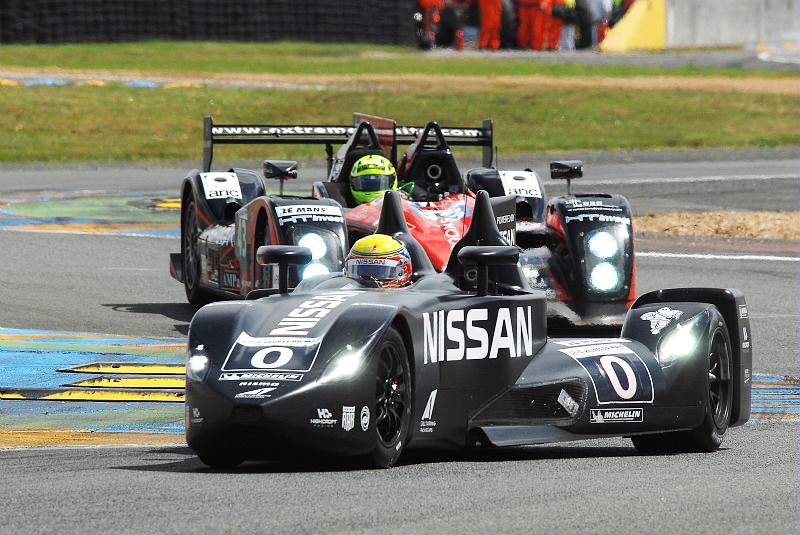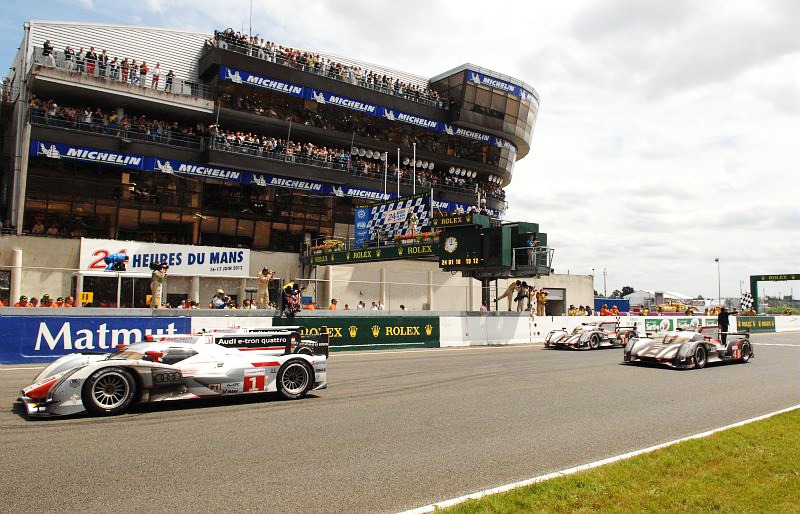
2012

The new youth
The 80th edition of the Le Mans 24 Hours was also the first year of the brand new World Endurance Championship, called the WEC (World Endurance Championship), launched by the Automobile Club de l'Ouest and the Fédération Internationale de l'Automobile.
One major absentee: Peugeot. As a formidable belligerent in the final series of 24 Hours races, the French model announced that it would be ending its endurance programme in January 2012.
The surprising DeltaWing
For the first time, garage 56, who intended to accommodate cars with technological advances, had found an occupant. The concept is known as: DeltaWing, an innovative prototype with particularly low consumption. With its pointed silhouette and featherweight (less than 500 kg), the car made an excellent start to the race however it retired at 10:57 pm following a collision with a Toyota.

Hybride 1st
Two Toyota TS030 Hybrids discovered the classic Le Mans to take the four favourite Audis on, including that of André Lotterer in pole position. They vanished into the heart of the night. The Audi, party which was also a hybrid, went on to win. This was the second consecutive victory for the crew.

This victory above all was the first for a diesel/electric hybrid vehicle. Audi rounded off a new hat-trick with the second hybrid Audi, the no. 2 of Allan McNish, Tom Kristensen and Rinaldo Capello in second place.
This success marked the beginning of a technological adventure and a new era which gradually aimed to decarbonise the automotive industry.

National Geographic celebrated the 24 Hours as the world's leading sporting event for the third consecutive year in 2012.